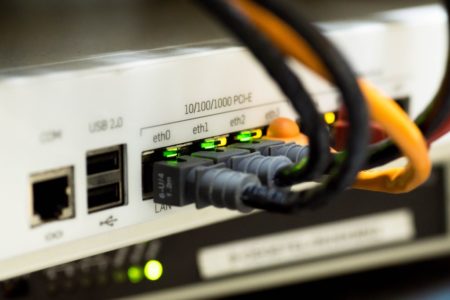What Are IPv4 and IPv6?

You may have read recently that Europe has run out of IPv4 addresses. That’s right, we’re amidst an IPv4 famine and until IPv6 is fully implemented, Europe is recycling its IP addresses. But what does this actually mean? What are IPv4 and IPv6, anyway?
Let’s be honest, unless you’re a raving computer geek like us, all this IP talk probably doesn’t mean much. So, we want to help you understand the past, present and future of IP addresses, and what it all means for your business.
What is an IP address?
Before we get into the technicalities of IPv4 and IPv6, here’s a quick lesson in the IP address and how it works.
Put crudely, Internet Protocol (IP) addresses are the phone numbers of the internet. Just as all phones need a unique number to communicate with the network exchange, all devices that connect to the internet need an IP address to share data. It’s the infrastructure of the internet. There are even “area codes” of a sort, used for something that us IT geeks call “subnetting” – a process that defines the range of IP addresses available within a network.
For example, the IP address 192.168.0.0/16 is made up of the base address (‘area code’) 192.168 followed by the subnet, which in this case is 16.
There is some complex binary mathematics involved in arriving at an IP address that makes even most IT geeks scratch their heads in confusion. Suffice to say, you’ll just have to trust us on this ????.
Who issues IP addresses?
Let’ start with a bit of history.
In the early days of the internet, all IP addresses were issued by the global registry, International Assigned Numbers Authority (IANA). They pretty much dished out whole blocks of direct addresses to any private individual or corporation who wrote them a letter. For example, the car manufacturer Ford has its own 19.0.0.0/8 block. Any IP addresses beginning 19 are machines owned by Ford. That would be like Sainsbury’s owning any telephone number that starts with 02. They don’t, by the way.
As computers and the net gained popularity, IANA realised that it would run out of IP addresses pretty darn quickly if it continued to give them out like Smarties. So, it made the area code portion a little bigger. It also delegated whole /8 blocks to regional registries so that it could provision IPs based per country. UK IP addresses, for example, are allocated by the European registry, Réseaux IP Européens, affectionately known as RIPE. More and more countries started coming online, so the volume of devices that needed addresses increased. And guess what? Yep, the registries didn’t have enough to go around.
IPv4
Between 1981 and 2017, the world operated on the first major version of the Internet Protocol —version 4 (IPv4). What happened to v1-3, I hear you ask? They were experimental protocols, used for just 2 years from 1977-1979.
What does IPv4 look like? All v4 addresses are based on 4 blocks of 3 decimal numbers, from 0.0.0.0 to 255.255.255.255 for a total of 4.3 billion individual addresses. That’s a fair few addresses but spanned over more than 30 years and in a world that’s reliant on smart devices, it’s not enough. We’re in IP address deficit. At 15:35 (UTC+1) on 25 November 2019, RIPE allocated its last remaining IPv4 address.
You might be thinking that you’ve heard all this before, and you’re right – sort of. Previous announcements of IPv4 exhaustion came from ICANN, who ran out of /8, then regional registries ran out of /22, and now RIPE is out of /24. It’s really the end for IPv4.
IPv6 to the rescue
So, is the depletion of IPv4 a cause for concern? Not really. It’s been long anticipated and the Internet Engineering Task Force (IETF) spent over a decade developing IPv4’s successor, IPv6. It’s been around for a good few years now, but the roll-out is a slow process.
On June 8, 2011, the Internet Society, supported by several prominent web companies, held a global 24-hour test of IPv6, famously known as World IPv6 Day. The global deployment of IPv6 arrived soon after on June 6, 2012 — World IPv6 Launch Day. IPv6 was finally ratified as an Internet Standard on 14 July 2017 and it is now being rapidly deployed across the globe. According to Google, on 8 December 2019, 29.23% of users that accessed Google did so over IPv6. That’s a 6.33% increase since 7 December 2018.
But how are registries issuing IP addresses to new devices in the meantime? With a huge recycling programme. Just as deactivated and disconnected phone numbers are reissued, IPv4 addresses that are no longer in use are being reclaimed to new devices.
You might also be wondering what happened to IPv5. It was an experimental real-time streaming protocol that didn’t work out, but that’s another story.
When will we exhaust IPv6?
It’s safe to say that the next few generations won’t need to worry about running out of IP addresses. IPv6 is based on 8 groups of 4 hexadecimal numbers, from 0000:0000:0000:0000:0000:0000:0000:0000 to FFFF:FFFF:FFFF:FFFF:FFFF:FFFF:FFFF:FFFF. If you want to be exact about it, IPv6 can support 340,282,366,920,938,000,000,000,000,000,000,000,000 addresses. That’s a lot of addresses. We could give every atom on Earth a unique IP address and still have enough for approximately 100 Earths, which could come in handy when the aliens land and demand access to our resources.
What does all this mean for your business and the future of the internet?
The bad news is that v4 and v6 addresses are incompatible, but the geeks of the world have that covered. For the moment, the likes of Google, Microsoft, Amazon and various internet service providers have put the technology in place to translate addresses back and forth between the two formats.
Will there be a sudden era of Internet Protocol chaos as the world makes the switch? Probably not. Unlike with BT ‘s Big Number Change back in the mid-90s, there won’t likely be a day when we enforce all devices to switch to IPv6. Instead, it will be a gradual phase-out of the old. It’s highly unlikely that you, the end-user, will feel the effects of the transition. Any impact is definitely a future problem that Google and Amazon are actively working on resolving. And as you’d expect, they’re already ahead of the game with their cloud technology. The Google Cloud Platform and Amazon Web Services already run exclusively on IPv6. You can visit Google’s IPv6 test programme to see if your devices are compatible with the new protocol.
Does anyone care about the death of IPv4? Sure, it’s a sad time for geeks. Just look where the technology has taken us in less than 4 decades. We totally honour that feat.
And if you’re wondering where an IP version goes to die, it floats into the great WEEE (Waste Electrical and Electronic Equipment – an EU directive from 2012 that says we have to recycle electronics) bin in the cyber sky alongside the floppy drive, CRT monitors, and mice with balls. Ahem.





